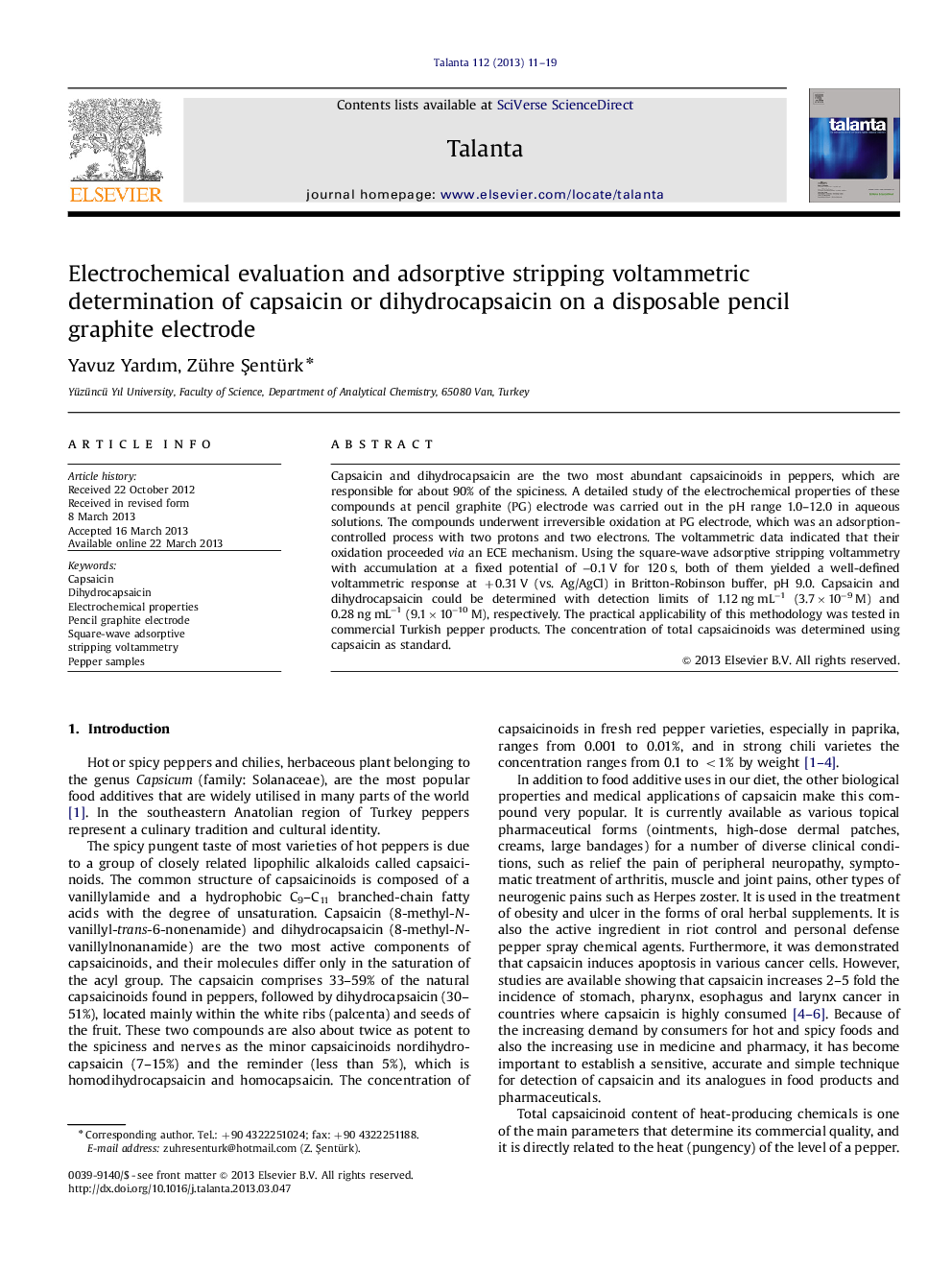| Article ID | Journal | Published Year | Pages | File Type |
|---|---|---|---|---|
| 7682113 | Talanta | 2013 | 9 Pages |
Abstract
Capsaicin and dihydrocapsaicin are the two most abundant capsaicinoids in peppers, which are responsible for about 90% of the spiciness. A detailed study of the electrochemical properties of these compounds at pencil graphite (PG) electrode was carried out in the pH range 1.0-12.0 in aqueous solutions. The compounds underwent irreversible oxidation at PG electrode, which was an adsorption-controlled process with two protons and two electrons. The voltammetric data indicated that their oxidation proceeded via an ECE mechanism. Using the square-wave adsorptive stripping voltammetry with accumulation at a fixed potential of â0.1 V for 120 s, both of them yielded a well-defined voltammetric response at +0.31 V (vs. Ag/AgCl) in Britton-Robinson buffer, pH 9.0. Capsaicin and dihydrocapsaicin could be determined with detection limits of 1.12 ng mLâ1 (3.7Ã10â9 M) and 0.28 ng mLâ1 (9.1Ã10â10 M), respectively. The practical applicability of this methodology was tested in commercial Turkish pepper products. The concentration of total capsaicinoids was determined using capsaicin as standard.
Keywords
Related Topics
Physical Sciences and Engineering
Chemistry
Analytical Chemistry
Authors
Yavuz Yardım, Zühre Åentürk,
